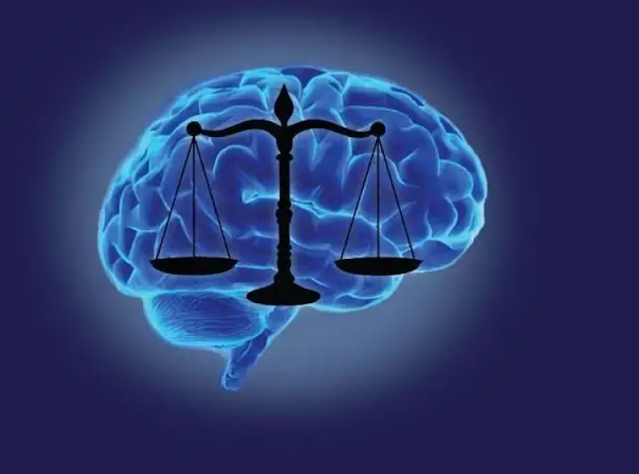Neuroscience in Society
Neuroscience in Society
This work was done as a part of Summer Program at Elio Academy of Biomedical Sciences.
Author: Riyaa Sri Ramanathan
Neuro-Law
Drug and addiction plays a vital role in most of the crimes. In the last few decades, the American prison population has grown by about 500 percent, largely because of drug-related arrests. Drug use affects the brain and is associated with significant changes to the Prefrontal Cortex (PFC). PFC is a part of the brain that manages impulse control and suppressing cravings. Structural and Chemical changes in the PFC can create difficulties in drug resistance. Seen this way, constant drug use is defined as a symptom of a disease called addiction rather than a toxic habit. Judicial system is working towards decision making and punishment in the crimes that involve drug users and addictive behaviors.
While neuroscience deals with patients having complications in the brain, Neurolaw deals with concerns in legal punishments of those patients. These laws mainly emphasize on how drug users have to be treated by the criminal justice team, whether these patients have to be jailed or receive therapeutic rehabilitation, or whether they have to receive both punishment and therapy.
In one case, an individual who had brain surgery to remove a tumor suddenly developed a compulsion to view child pornography. Evidence showed that a surgery had damaged a part of the brain that changed the patient’s personality. In these cases, neurolaw governs on how these patients have to be punished for criminal side effects, after they underwent a life saving surgery.
Another example is the eyewitness testimony used in the courtroom for criminal events. Studies reveal that testimony of people witnessing the crime are considered as more convincing factors than physical forensic evidence. However, recent research suggests that human memory can be flawed, especially when recalling a memory of a traumatic event. As witnesses recall their memories, they introduce errors, which are then reconsolidated into new memories. In a study of New York City residents one year after the 9/11 terrorist attacks, their memories of the event differed in 40 percent of the details. Neuroscience has demonstrated that it is far from infallible. Judges and lawyers must now come to terms with this change of perspective.
In addition, another important case also highlights that polygraph tests have been rejected in many courts as being unreliable. This decision was based on the work of neuroscientists which proved that physiological reactions measured by polygraph tests are not linked to guilt or lying. This is also part of the reason why lie detector tests were revoked by the US supreme court as well. Reliable lie detection technology can revoke these results but they are yet to be discovered.
NEUROECONOMICS
Neuroeconomics is a field of study in which economists and neuroscientists have combined to investigate the brain processes behind decisions that involve finance and economy.
Neuroeconomics is required in situations where choices are less clear cut or rational, where unknown factors and risk are involved with neurological disturbances and in situations where people do not realize the irrationality of economic choice. To overcome these, scientists measure brain activities as people complete their economic tasks.
The most risky decisions involving money happen in the part of the brain called the insular cortex. Networks of the insular cortex interact with other brain areas which include the limbic system that helps in learning, memory and emotions. In addition, scientists have also figured out that hormones such as oxytocin, testosterone and cortisol, also play a role in economic decisions. This was evident from the case where some persons were injected with doses of oxytocin. Results displayed that the people who received the oxytocin boost were more trusting with their money and invested larger amounts with a broker suggesting that social and neurobiological factors interact to play a role in such decisions, and these kinds of effects are at the heart of many economic decisions.
Another study of male stock traders when saliva samples were collected during a work week, before and after the bulk of their work was done. Studies show higher risks were taken by traders on days when they had higher testosterone levels than average. This proves that levels of the hormones testosterone and cortisol correlated with risk-averse behavior. Research into reward pathways and the way your brain promotes impulsive behavior can help prevent making purchases and decisions.
ETHICS AND THE FUTURE OF NEUROSCIENCE
Brain science has raised many ethical issues to understand the brain started or exacerbated practices such as phrenology, eugenics, forced sterilization, and unnecessary lobotomies. The future of neuroscience lies in raising some serious ethical questions, which includes Gene editing technology, concerns on the timeliness of treatment of diseases, and consent in clinical treatment.
Genetic code playing its role in many diseases paves way to screen for diagnosis in the womb. And to prevent such occurrence of disorders by altering a child’s genes as a viable option, raises questions like is it ethical to alter an unborn child’s genetics?.
Timeliness of treatment also raises several ethical questions like “Are medical professionals obligated to take steps to treat a disease or disorder that currently shows no symptoms and might never actually materialize?” or “When is the right time to intervene?”. Startling technological advances of recent decades, has thrown many scientists and doctors to deal with serious ethical quandaries created by neuroscience.
Serious questions arise in case of seeking consents in clinical treatments. Inquiries may be on, “When getting permission to treat the brain in some way, the organ that gives consent is the same as the organ being treated?” or ‘How does that affect the idea of “informed consent” in cases like Alzheimer’s disease or a debilitating brain tumor?’ Or ‘Should a doctor proceed with treatment when the patient might not have had the ability to properly consent?’.
These procedures are extremely important in interpreting the future of neuroscience and how it impacts everyday lives.
Author: Riyaa Sri Ramanathan
This work was done as a part of Extended Research Program at Elio Academy of Biomedical Sciences.







Comments